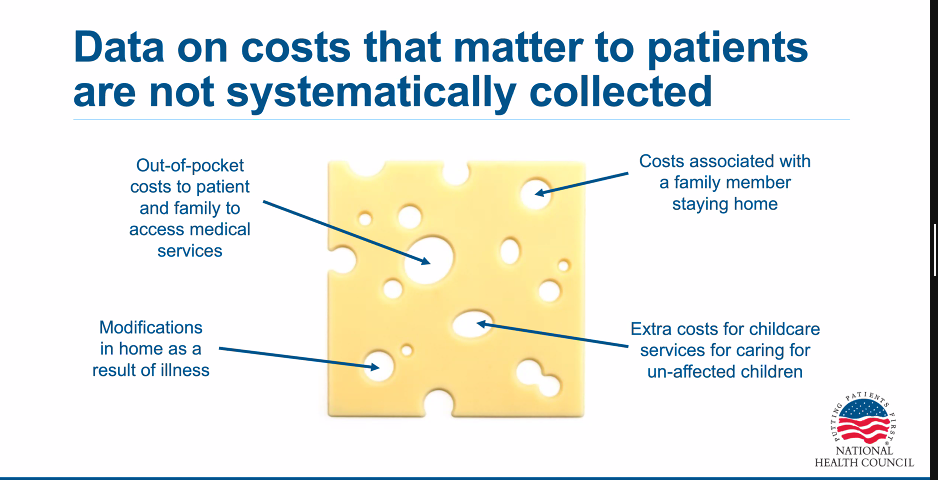ISPOR: Baking the Patient Perspective Into Value Assessment
It shouldn’t be just about QALYs and cost. An ISPOR panel today discussed how best to incorporate the patient perspective into value assessment.
The complicated recipe of value assessment has traditionally included evidence of efficacy and safety from clinical trial results, quality-adjusted life year (QALY) metrics and other data-rich factors.
Now researchers, modelers and patient groups are figuring out ways to include the patient point of view in the assessment of drugs and other medical interventions.
The stakes are high, especially for patients, but also for drugmakers and payers because incorporating the patient perspectives can change how a drug or some other kind of intervention fares in a value assessment, lowering or raising its ranking with respect to other interventions.
Four experts on incorporating patient perspective into value assessment participated in a panel discussion today at the annual ISPOR meeting, which is being held virtually.
Melanie Whittington, Ph.D., M.S., the associate director of health economics at the Institute of Clinical and Economic Review (ICER), the influential value-assessment organization in Boston, said ICER contacts patient groups before it publicly announces it is going to conduct a review and involves the groups as it decides the scope of its review and which clinical outcomes to consider. “As a modeler, this is always a great opportunity for me to figure out what matters most to patients to make sure that is captured, to the extent possible, in the model,” she said.
But some patient groups have criticized ICER and its approach to value assessment, which leans fairly heavily on QALYs. Last year, ICER hired its first vice president of patient engagement, Yvette Venable.
Whittington discussed several examples when the consideration of the patient perspective had a direct influence on several ICER assessments. She mentioned a review of drugs for multiple sclerosis. FDA approvals typically depend on reductions in relapses, she said, but “through engagement (with patients and patient groups) throughout the review” ICER that recognized that relapses weren’t as important to patients as the accumulation of long-term functional disabilities.
“So when the cost-effectiveness model was built to judge what a fair price would be we used functional outcomes rather than relapses, which actually changed the ranking of which drugs worked best for certain patients,” Whittington said.
Another panelist, Elisabeth M. Oehrlein, Ph.D., M.S., the assistant vice president of research and programs at the National Health Council, an umbrella organization for patient advocacy groups, disease groups, and other organizations, said patient groups want qualitative input shifted to more systematic assessment of the patient perspective that results in quantitative evidence.

One of Oehrlein slides included an image of Swiss cheese and listed out-of-pocket costs, the extra cost of childcare and modifications to people’s homes as patient-perspective evidence that may be missing from value assessments. She said patient advocacy groups are eager to participate and provide information and data and mentioned a collaboration between ICER and a multiple sclerosis group.
Julie Slejko, Ph.D., an assistant professor of the pharmaceutical health service research at the University of Maryland School of Pharmacy, discussed systematic collection of the patient perspective information and how application to specific diseases can be revealing. Slejko is the research core lead for the Patient-Driven Values in Healthcare Evaluation (PAVE), a center that is a collaboration between the National Health Council and the Maryland pharmacy school that is funded by a grant from the Pharmaceutical Research and Manufacturers of America (PhRMA) Foundation. PAVE’s research of patients with chronic obstructive pulmonary disease (COPD) showed that patient “physical abilities” may not always match the measures of lung function typically used to assess COPD patients yet is physical abilities that patients care about, Slejko said.
Slejko suggested that patient-perspective researchers need to be careful about the payer mix of their subjects. With the help of patient advocates, PAVE researchers identified out-of-pocket costs as an issue after a prior round of analysis didn’t include flag those costs as a concern= because many of the study subjects were being seen by Department of Veteran Affairs clinicians.
R. Breet McQueen, Ph.D., an assistant professor at the University of Colorado Skaggs School of Pharmacy and Pharmaceutical Sciences, moderated the discussion. He also ushed his time as a panelist to discuss multicriteria decision analysis tools for assessing patient perspectives.
ISPOR: How Are We Possibly Going To Afford Gene Therapies That Have Price Tags in the Millions?
May 19th 2021Panelists at 2021 ISPOR say price shouldn't be barrier. Suggestions include steep payment discounts if therapies don't meet outcome goals and regulators removing withdrawing approvals if the therapy doesn't work.
Read More